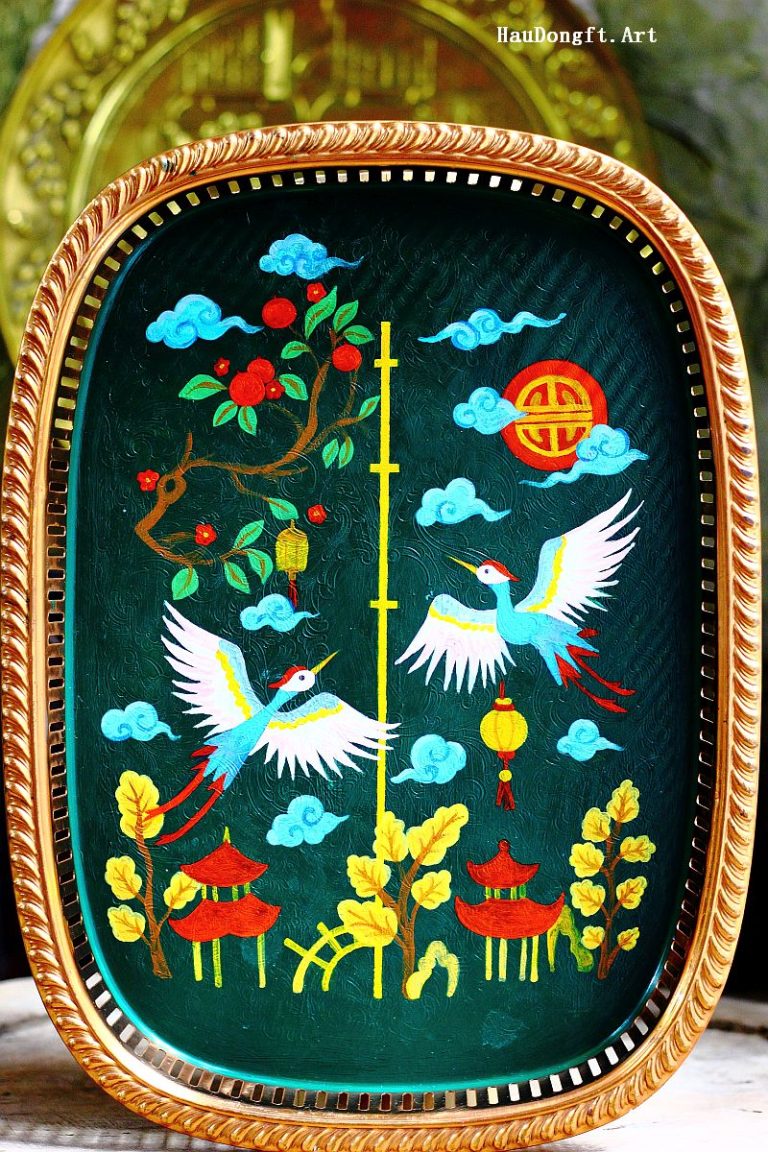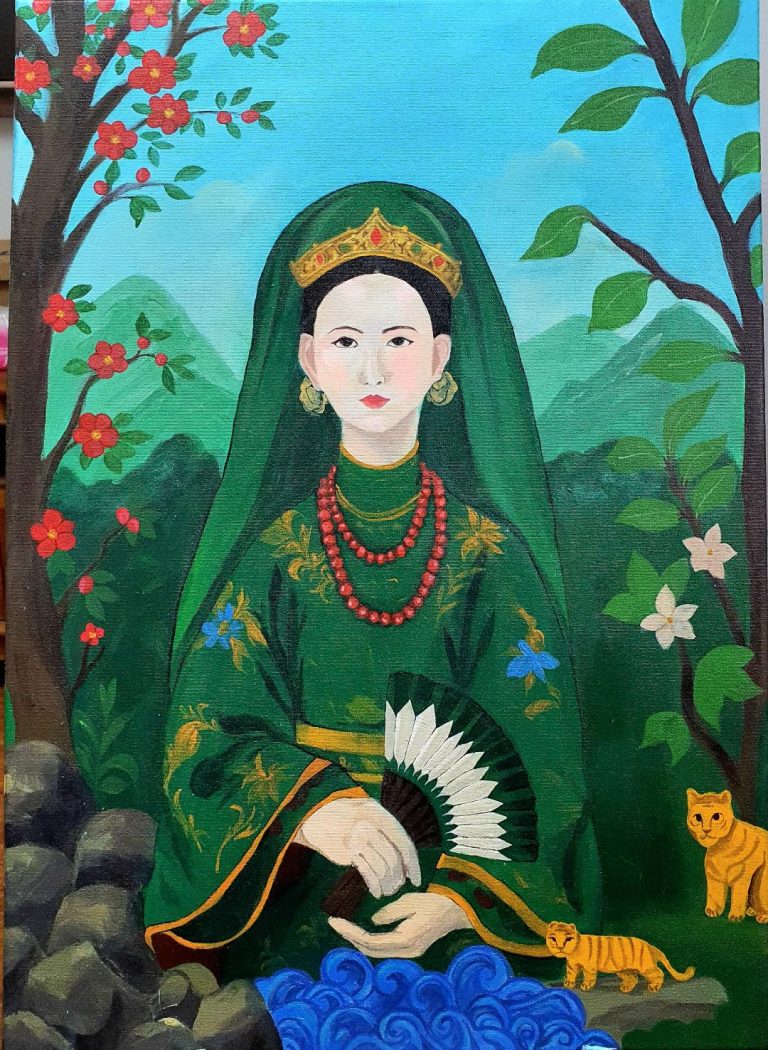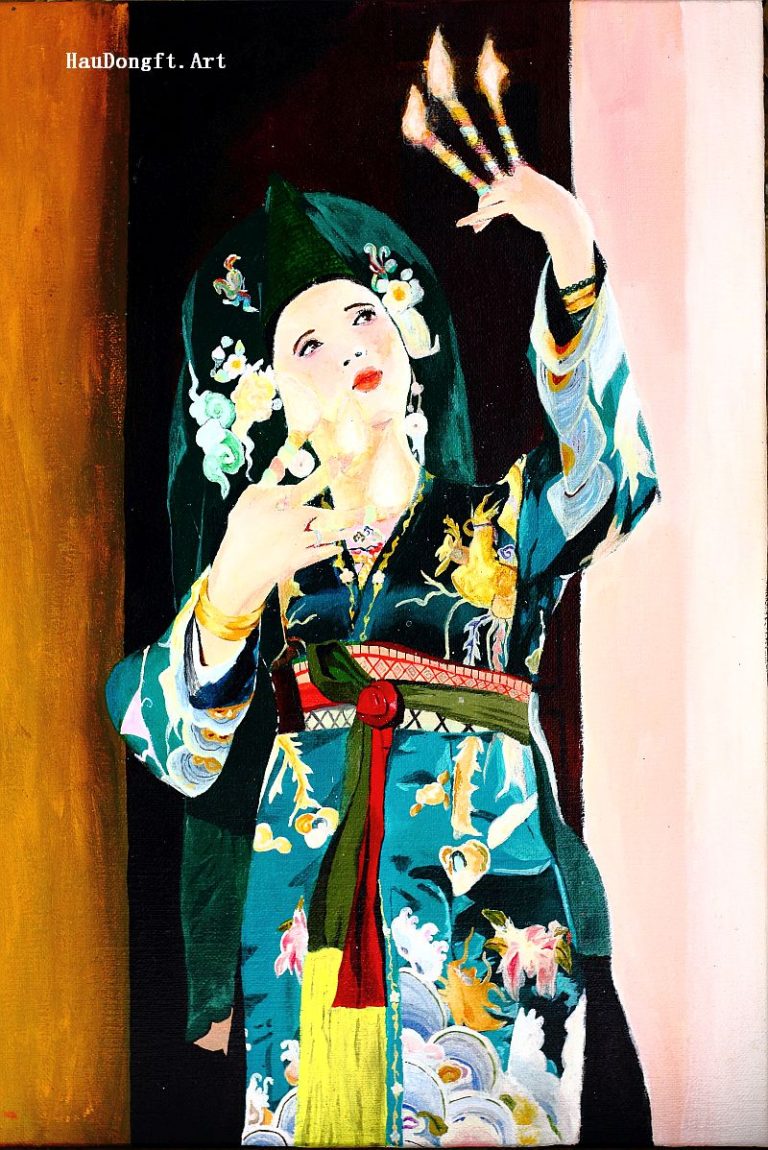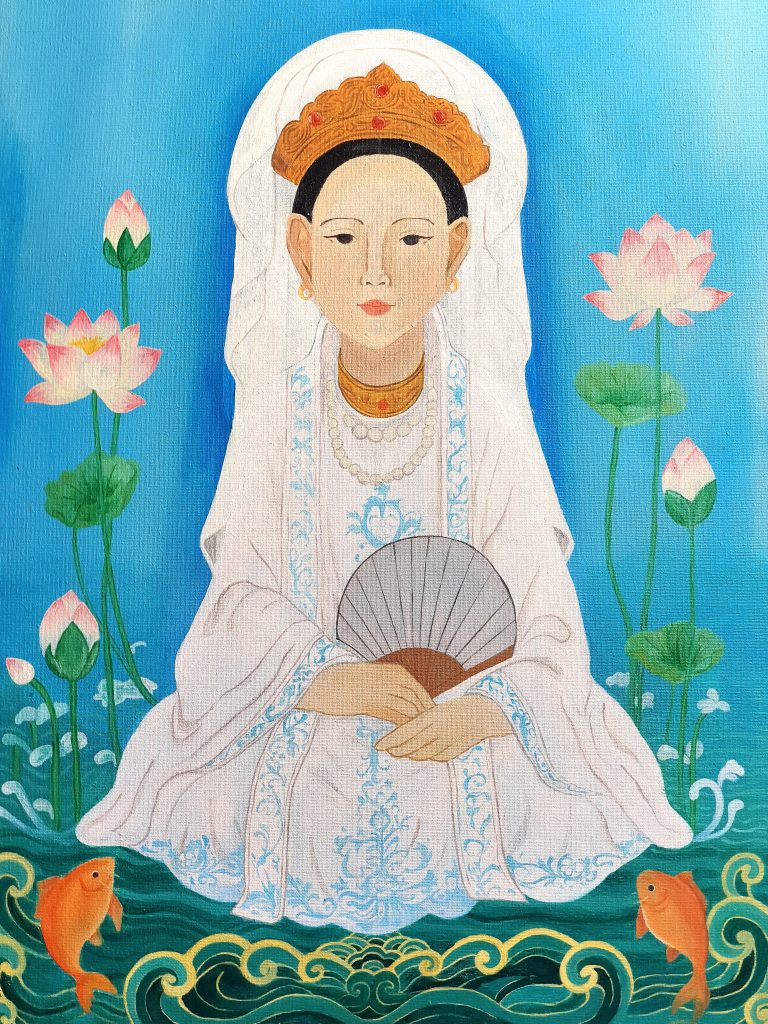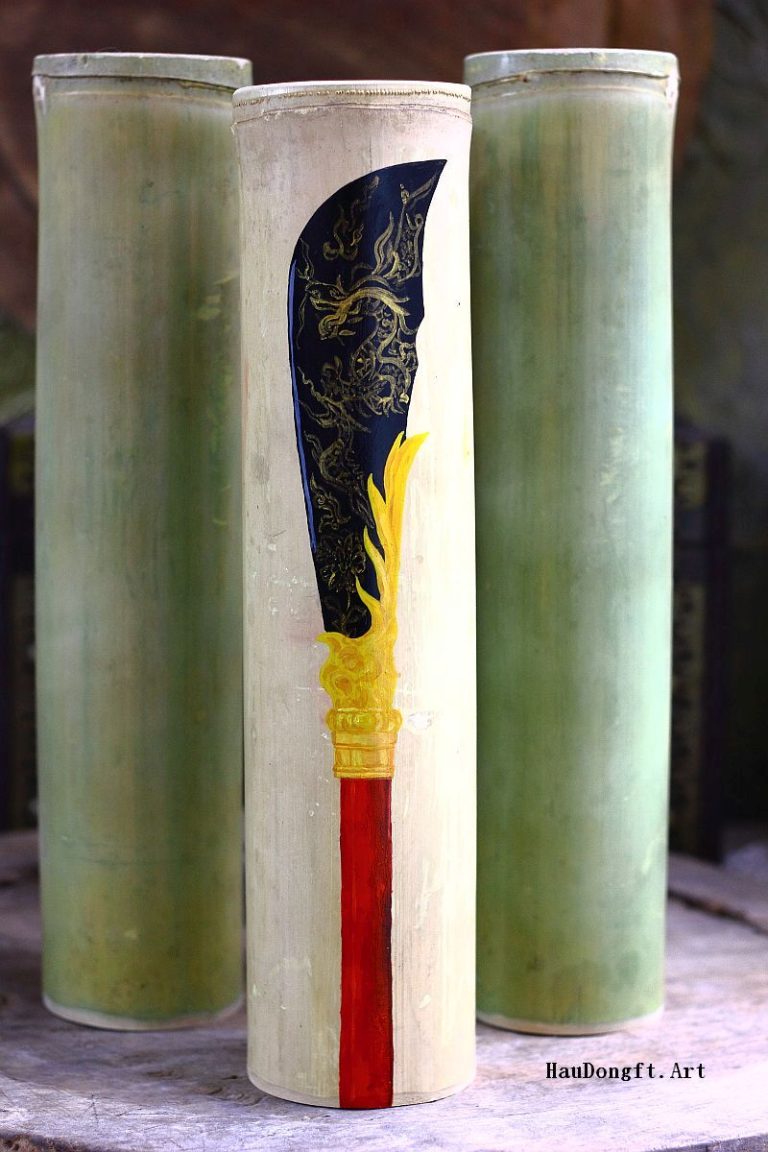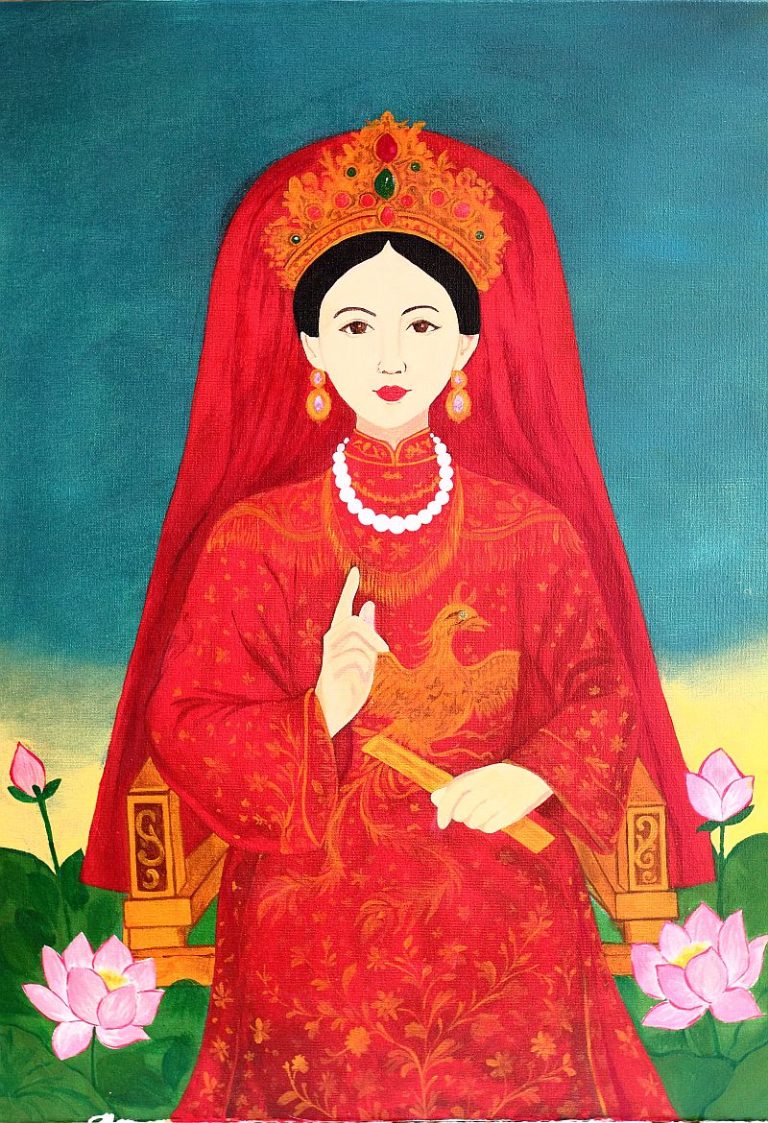Recorded from Lê Bá Linh
Temple keeper – Temple at 102 Hàng Bạc, Hoàn Kiếm District, Hanoi
We all know that in any religion or belief system, devotees sincerely present offerings to the deities they revere and serve. These offerings may take many different forms—large or small, simple or elaborate—depending on one’s devotion and means, but they are still accepted by the deities.
First: Regarding offerings in the Tứ Phủ initiation ceremony (trình đồng or căn đồng):
1. The opening ritual (phát tấu) to honor the Five Envoys includes: round ceremonial cakes (oản), fruit, cakes, sweet soups, betel quid with a bowl of water, rice and salt, tea for offering (the quantity depending on one’s devotion).
Meat offerings: chicken or cooked pork with sticky rice and wine.
Incense, flowers, lamps, candles.
A tray with mirror, comb, tea, cigarettes, face towel, notebook and pen, and raw eggs (called the phát tấu tray, with five of each item).
2. Offerings of cakes and fruit (oản quả) to the Buddhas and Saints are placed on the altars in the temple (if during a festival the temple conducts its own communal rites, the devotee can only present offerings at the main altar they were granted). The offerings include incense, flowers, lamps, tea, fruit, and food arranged harmoniously (often in two trays for balance and beauty).
Incense: stick or coil incense, releasing fragrant smoke that carries the devotee’s wishes to the Buddhas and Saints.
Flowers: seasonal blossoms chosen with devotion (traditionally lily, chrysanthemum, and rose), beautiful in color and freshness, offered to the Saints.
Lamps: pairs of oil lamps or candles symbolizing light, wisdom, and the radiance of the Saints.
Tea: brewed from plants, offered as a pure drink to the Saints.
Fruit: a tray of five fruits, representing what humans consume, offered to the Saints.
Food: ceremonial cakes (oản), traditional pastries, sweets made from grains and cereals.
In addition, offerings to the Four Palaces (Tứ Phủ) include tam sinh (three sacrificial animals): one chicken, one duck, one piece of pork—or a roasted piglet or pig’s head—together with sticky rice and wine. Another version of tam sinh is chicken + roasted piglet + carp, all cooked, with sticky rice and three cups of wine.
Meat offerings: chicken, sticky rice, and wine for Đức Thánh Trần (if the temple has a Trần Triều altar).
Lower Altar offerings (to the Five Tigers): five eggs (chicken or duck) for the Five Tigers, two additional eggs for the Snake Deities, a piece of raw pork, a dish of rice and salt, plus cakes, fruit, betel, tea, pastries, sweets, etc.
Several sumptuous meal trays to honor the heavenly mandarins and spirit generals of the temple (each must include wine poured into three cups).
Offerings to Sơn Trang (Mountain Palaces): 15 portions each of items such as shrimp, crab, snails, dried fish, grilled squid, rice noodles, sticky rice cakes, rice flour cakes, square glutinous rice cakes (bánh chưng), pickled bamboo shoots, bitter gourd, green figs, lime, chili, galangal, cold cuts, fermented pork rolls, cơm lam (bamboo-tube rice), fermented meat, coconut, tofu, shrimp paste, fermented shrimp sauce, and limewater (considered strong liquor), green tea, red rice wine… but always including betel leaves carved like phoenix wings for the twin goddesses. These offerings may be grand or modest, depending on the devotee’s resources.
Offerings to wandering spirits (chúng sinh) in the temple yard: cakes (oản), fruit, sweets, betel, candles, a water basin, rice and salt, a pot of porridge divided into many bowls, along with snacks like corn, sweet potatoes, cassava, popcorn, rice crackers, plus paper money and votive clothes.
Second: Regarding offerings in a regular hầu đồng session:
Before invoking the Saints, thanh đồng must prepare offerings similar to the six essential items above (incense, flowers, lamps, tea, fruit, food) at the appropriate altars in the temple. The arrangement must be solemn and harmonious, reflecting the sacred beauty of the temple dedicated to the Immortal Saints.
Meat offerings: usually chicken, sticky rice, and wine; tam sinh is not required unless performing a major Tam Phủ or Tứ Phủ ritual. If the temple has a Trần Triều altar, meat offerings are made there as well.
Sơn Trang offerings, lower altar offerings (Five Tigers, Snake Deities), and offerings to wandering spirits are prepared as described above.
The thanh đồng also prepares ritual incense, purification incense, candles for the altar, and trays of money to distribute as blessings.
Third: Regarding lộc phát (distribution of blessings) during hầu đồng rituals:
In earlier times, during full initiation rituals or regular hầu đồng ceremonies (including saintly birthdays), offerings distributed as blessings were minimal. High-ranking Mandarins rarely distributed offerings—only one or two might give small tokens such as paper money or a cigarette, but never alcohol or elaborate items.
From the palaces of the Chầu Bà (Lady Generals) onward, the practice of distributing offerings began. These blessing offerings were beautifully arranged trays presented at the altar before distribution.
The Chầu Chúa (Lady Lords) usually gave betel, fruit, or traditional cakes (e.g., bánh chưng, bánh cốm, or glutinous rice cakes). Sometimes paper money was included with betel.
The Ông Hoàng (Princes) distributed sweets, tea, and cigarettes in small plastic bags tied with red string, or traditional cakes (e.g., oản, white bánh khảo). For example: Ông Hoàng Bơ gave bánh khảo, Ông Hoàng Bảy gave tea packets and a cigarette, Ông Hoàng Mười gave cookies or oản.
Today, with economic and technological development, blessing offerings have become richer and more diverse: wine, beer, soft drinks, packaged sweets, large boxes of snacks, and many other items. However, the scale still depends on each devotee’s financial ability—one should not compete excessively, as it could harm one’s family life.
The Thánh Cô palaces may distribute seasonal fruits or simple items: Cô Đôi often gives fruit; Cô Bơ gives pomelo segments, peeled jicama, lotus seeds, or vegetarian cakes; Cô Sáu gives fruit or traditional pastries; Cô Chín gives paper fans, mirrors, perfumes, or face towels; Cô Bé Sơn Trang gives trays of lime, chili, ginger, bitter gourd, figs, pineapples, etc.—and nowadays sometimes sugar, rice, soft drinks, or household items.
The Thánh Cậu (Divine Pages) once gave small candy bags (10+ pieces in bright colors), but today they may distribute full packets or boxes of sweets, along with plastic toys, cars, boats, etc.
In the past, after a hầu đồng session, the host family would also distribute a simple gift (lộc chiếu), such as a banana, a small cake, or another offering from the altar. Nowadays, since offerings are already distributed during the ritual, this practice has declined.
Traditionally, each spirit received a separate offering tray suited to their nature, unlike today where a single tray is often shared across ranks. The elders believed one could not offer the same tray to a Great Mandarin as to a Page or Maiden. Similarly, offerings to Lady Saints should not be identical to those for the Maidens.
Ultimately, the richness of offerings depends on the devotee’s sincerity and means, not on whether the items are luxurious or costly. As one devotee once remarked: “It is better to buy a few valuable items that can be eaten after offering, than to buy many useless things that go to waste.” This illustrates the evolving differences between hầu đồng practices in the past and today.
